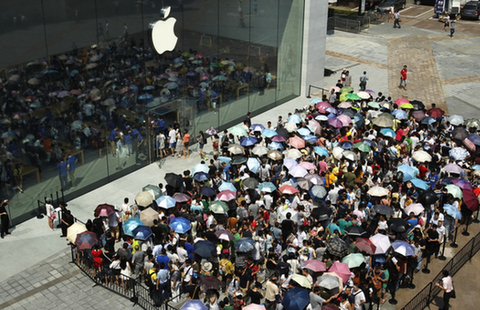China to top US in business travel
(Bloomberg) Updated: 2014-07-29 06:50China is poised to displace the US as the world's biggest business-travel market by 2016, aided by accelerating export growth and slowing inflation.
Spending worldwide for business travel will climb 6.9 percent this year to $1.18 trillion, according to a report released by the Global Business Travel Association on Monday. Growth will accelerate by an estimated 8.6 percent next year and then slow in 2016 through 2018, the GBTA forecast shows.
In China, the increasing pace of exports since mid-2013, consumer prices running below government targets, and nominal wage gains that support more spending and profit growth are contributing to an expansion in the market. That contrasts with the US, where economic growth has been "stubbornly low," along with employment and wages, the GBTA said.
"China, along with the BRICS countries of Brazil, Russia and India, are leveraging their business travel expenditures into more economic opportunities," said Michael McCormick, GBTA executive director. "We expect to see this shift in business travel spending to continue."
|
 |
 |
Since the GBTA began its study in 1998, the US has been the world's largest business-travel market, although it has not seen the fastest expansion. While spending in China has increased an average 16 percent a year since 2000 to reach $225 billion in 2013, in the US it rose 1.1 percent annually to $274 billion.
Last year, American business travelers spent $1.20 for every dollar spent by the Chinese, down from $7.70 in 2000, according to the GBTA, which analyzed travel spending in 75 countries for its study.
The projections have implications in areas as diverse as hotel construction and plane purchases by airlines, and if realized will put added pressure on China's already congested airspace, where flight delays run at about 25 percent, and only 20 percent of available airspace is allotted to civil aviation.
China is expected to account for half of the increase in Asia's commercial aircraft fleet, to 10,300 in 2020 from 6,000 at the end of 2013, according to Ed Greenslet, who publishes The Airline Monitor. The US fleet will grow to just over 7,200 from 6,482 in the same period, he said.
The Asia-Pacific region is seeing almost double the hotel rooms being added in Europe, the Middle East and Africa, and about 30 percent more than the US, Matthew Fry, a senior vice-president at Starwood Hotels and Resorts Worldwide Inc, said earlier this month.
Many emerging markets have few globally branded hotels, and as these economies grow, demand for accommodation that meets international standards is climbing, he said.
Asia Pacific is the largest regional business travel market, followed by Western Europe and the US, according to the GBTA study. The three regions accounted for 89 percent, or $984 billion, of about $1.1 trillion in spending last year.
By 2018, Asia Pacific will gain another 5 percent market share, with Western Europe and the US forecast to lose 2 percent and 3 percent, respectively.
- China angered by US protectionism
- Chengdu achieved 8.7% GDP growth
- China produces more cigarettes
- Subaru recalls vehicles in China
- Top 9 Chinese tycoons invited to govt headquarters
- McDonald's rejects all OSI meat, outlets suffer shortages
- Net profits of China's SOEs up 4.4%
- China's trade in services up 15% in first half















